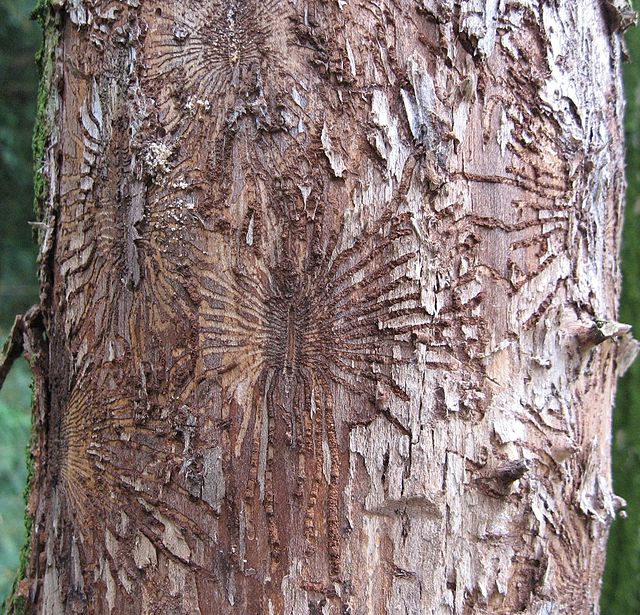Dutch elm disease (DED) is caused by a member of the sac fungi (Ascomycota) affecting elm trees, and is spread by elm bark beetles. Believed to be originally native to Asia, the disease was accidentally introduced into America, Europe, and New Zealand. In these regions it has devastated native populations of elms that did not have resistance to the disease. The name "Dutch elm disease" refers to its identification in 1921 and later in the Netherlands by Dutch phytopathologists Bea Schwarz and Christine Buisman, who both worked with professor Johanna Westerdijk. The disease affects species in the genera Ulmus and Zelkova, therefore it is not specific to the Dutch elm hybrid.
On a golden elm with characteristic leaf shedding
Beetle feeding galleries on wych elm trunk
An infected English elm at West Point, NY, July 2010
Salisbury Cathedral from Lower Marsh Close, 1820, Andrew W. Mellon Collection, National Gallery of Art, Washington, D.C.
Ascomycota is a phylum of the kingdom Fungi that, together with the Basidiomycota, forms the subkingdom Dikarya. Its members are commonly known as the sac fungi or ascomycetes. It is the largest phylum of Fungi, with over 64,000 species. The defining feature of this fungal group is the "ascus", a microscopic sexual structure in which nonmotile spores, called ascospores, are formed. However, some species of Ascomycota are asexual and thus do not form asci or ascospores. Familiar examples of sac fungi include morels, truffles, brewers' and bakers' yeast, dead man's fingers, and cup fungi. The fungal symbionts in the majority of lichens such as Cladonia belong to the Ascomycota.
Ascomycota
A member of the genus Ophiocordyceps which is parasitic on arthropods. Note the elongated stromata. Species unknown, perhaps Ophiocordyceps caloceroides.
The "candlesnuff fungus" in its asexual state, Xylaria hypoxylon
The ascocarp of a morel contains numerous apothecia.








